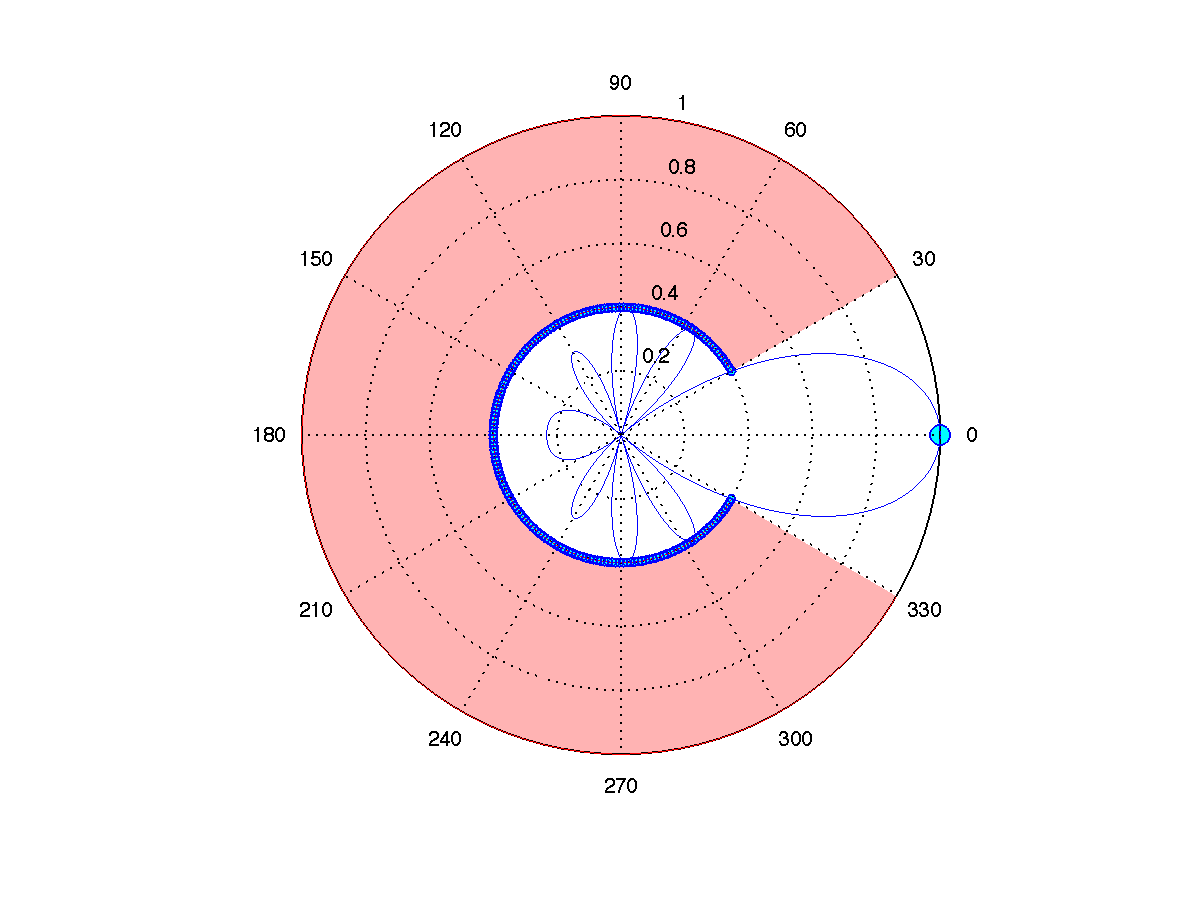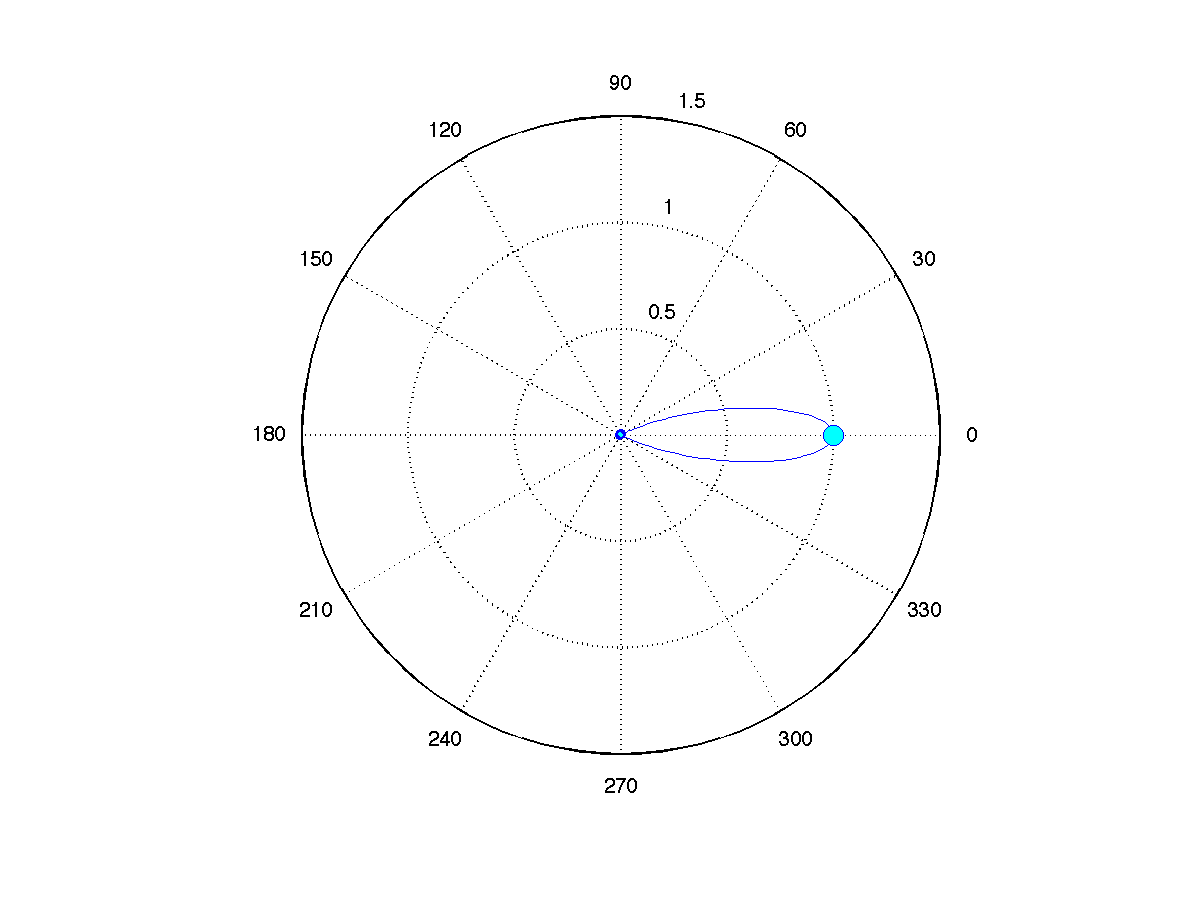Diagram Shaping via SOCP
Minimum thermal noise power for given sidelobe level
Minimum sidelobe level attenuation
Minimum thermal noise power for given sidelobe level
We first seek to minimize the thermal noise power subject to a sidelobe level constraint. This problem can be cast as

The above  constraints are second-order cone constraints on the decision variables, since they involve magnitude constraints on a complex vector that depends affinely on the decision variables.
Hence the above problem is an SOCP.
constraints are second-order cone constraints on the decision variables, since they involve magnitude constraints on a complex vector that depends affinely on the decision variables.
Hence the above problem is an SOCP.
A CVX implementation of this problem is given below. Note that CVX understands the magnitude of a complex variable and transforms the corresponding constraint into a second-order cone one internally.
cvx_begin
variable z(n,1) complex;
minimize( norm(z,2) )
subject to
for i = 1:N,
abs(exp(a*cos(Angles(i))*(1:n))*z) <= delta;
end
real( exp(a*(1:n))*z) >= 1;
cvx_end
For a particular example, we take the same parameters as in the least-squares design. We set the sidelobe level at  . Measured in decibels (dB):
. Measured in decibels (dB):

The coarse discretization level of  may be an issue. This is readily solved by using a higher number, say
may be an issue. This is readily solved by using a higher number, say  .
.
 |
Antenna array design: minimal thermal noise power given a sidelobe level constraint, enforced at |
Minimum sidelobe level attenuation
Our goal is now to minimize the sidelobe attenuation level,  , given the normalization requirement
, given the normalization requirement  .
.
This can be cast as the SOCP

A CVX implementation is given below.
cvx_begin
variable z(n,1) complex;
variable delta(1)
minimize( delta )
subject to
for i = 1:N,
abs(exp(a*cos(Angles(i))*(1:n))*z) <= delta;
end
real( exp(a*(1:n))*z) >= 1;
cvx_end
The result shows an optimal attenuation level in the stop band of  , which, in decibels, is:
, which, in decibels, is:

 |
Antenna array design: the optimal magnitude diagram. The attenuation is excellent in the stop band, so that the stop-band magnitude is not distinguishable from zero in this plot. |

 dB, enforced at
dB, enforced at